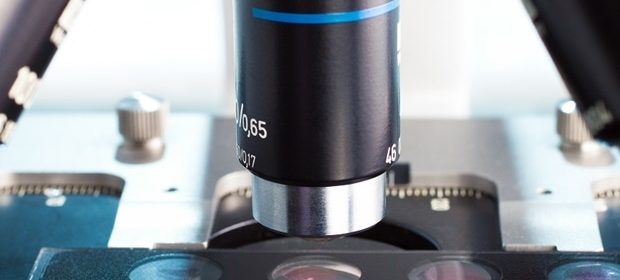Punch Biopsy Results and Side Effects

Punch biopsies are a type of technique used on the skin to obtain tissue for microscopic and histopathological examination. A tube-shaped sharp cutting tool is rotated through the skin to the subcutaneous fat to obtain a cylindrical-shaped specimen. This sample undergoes tissue fixation, preparation of slides and staining for microscopy, or storage in solution for bacterial or viral cultures.
Primary indications for punch biopsy include suspicious skin growths and inflammatory or bullous eruptions. Active infections in the area or a known history of bleeding disorders are contraindications.
Results
Acquisition of results largely depends on the institution where the procedure was conducted. However, most are readily available within a few days if further tests or a second specialist opinion are not required. Technique and sample quality are crucial factors in being able to make an accurate diagnosis. Poor samples may result in missed diagnoses. Moreover, it is not uncommon to find that subsequent biopsies are necessary in order to ascertain a correct diagnosis.
Abnormal pathology reports may have several findings. An abnormal result could indicate:
- Possible infection
- Benign tumors (such as moles)
- Precancerous lesions (including actinic keratosis)
- Cancerous growths (such as squamous cell carcinoma)
- Other skin conditions, such as eczema or psoriasis
Results that are suggestive of pathology often require further testing in order to treat the patient, and to follow up the response to treatment, as well as to monitor lesion progression. However, follow-up treatment may not be required in cases where the biopsy resulted in complete lesion removal and there is no chance of recurrence.
Complications
Puncturing the skin may result in some degree of scarring. Healing is facilitated by the use of sutures, which greatly reduce the healing time and the incidence of scarring. Furthermore, the skill and technique of the surgeon also play a major role in scar development. The neater the procedure, the less the risk of developing a significant scar.
The procedure typically requires the use of local anesthetic. Thus, a patient will not need to stay in a hospital following the procedure and may resume daily activities directly after. Allergy to local anesthetic or the medication used to induce deep sedation, however, may cause complications. Evidence of allergic reaction includes vesicles, itching and erythema. Peripheral vasodilation is usually self-limited, but may result in fainting, sweating and nausea.
Other possible complications include bleeding at the site where the biopsy was taken and infection. To avoid infection, it is imperative that biopsies are not done at sites with active infection and that the site is thoroughly prepared before the procedure. In anatomical areas that are prone to infections, specific guidelines may be followed to reduce the risk, such as antibiotic therapy, although rarely indicated. Significant pain, if it occurs, may be treated with painkillers, but this is also a rare side effect of punch biopsies. A little bleeding may occur from the skin wound.
References
- http://www.nhs.uk/conditions/Biopsy/Pages/Introduction.aspx
- http://www.gosh.nhs.uk/health-professionals/clinical-guidelines/skin-biopsy-punch-method
- http://www.cancer.ca/en/cancer-information/diagnosis-and-treatment/tests-and-procedures/punch-biopsy/?region=on
Further Reading
- All Biopsy Content
- Biopsy – What is Biopsy?
- Types of Skin Biopsy
- What is a Breast Biopsy?
- What is a Skin Biopsy?
Last Updated: Feb 26, 2019

Written by
Dr. Damien Jonas Wilson
Dr. Damien Jonas Wilson is a medical doctor from St. Martin in the Carribean. He was awarded his Medical Degree (MD) from the University of Zagreb Teaching Hospital. His training in general medicine and surgery compliments his degree in biomolecular engineering (BASc.Eng.) from Utrecht, the Netherlands. During this degree, he completed a dissertation in the field of oncology at the Harvard Medical School/ Massachusetts General Hospital. Dr. Wilson currently works in the UK as a medical practitioner.
Source: Read Full Article